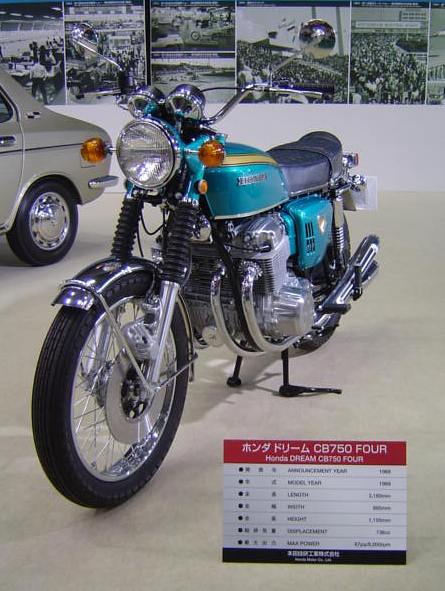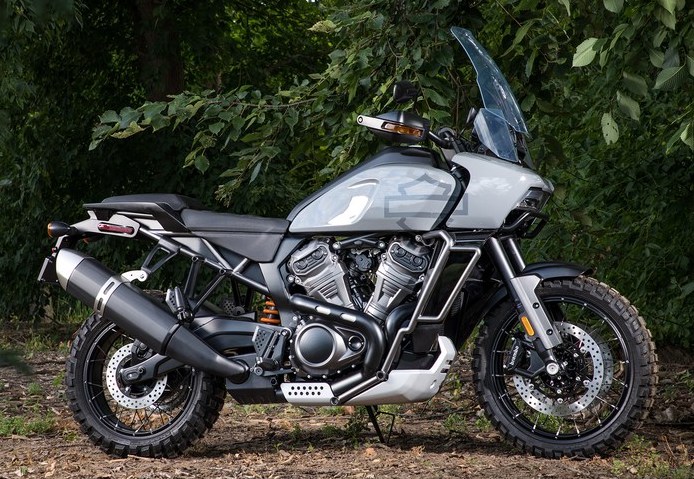Nostalgia bikes are seemingly everywhere, and most of the ones that aren’t BMWs from the Heritage line are what many of us used to call UJMs – Universal Japanese Motorcycles. Depending on your view of Japanese bikes, this was either a term of devotion or derision, but few riders held a neutral opinion of the remarkably similar-looking four-cylinder bikes that flooded our shores from overseas in the 1960s and ‘70s.
Cycle, a magazine started in 1950, coined the term as a comment on the success of Honda’s CB750, a bike that first came to America in 1969. Spotting a UJM was (and is) easy: the solid, torquey inline-four engine that is the focal point of the entire bike, one carburetor for each cylinder, one or two disc brakes on the front wheel, a simple tubular cradle frame and a twin-shock setup on the rear end. The Big Four—Honda, Kawasaki, Suzuki and Yamaha—had multiple models in various displacements, and eventually the concept of the UJM expanded to include bikes with two, three and even six-cylinder engines.
In a world where imitation is the sincerest form of flattery, the Japanese manufacturers began to dominate the market, and it didn’t take long for other builders to take notice. Even though it wouldn’t last forever, soon the UJM aesthetic spread across the motorcycling world, from singles to early versions of touring bikes.
Kawasaki produced the 750cc Z1 in 1972. It set records and elevated blood pressures as the most powerful inline-four to date until 1976, when the Z900 made it obsolete. Suzuki streeted the first GS750 in 1976 and added its little sister, the parallel twin GS400, to their lineup at the same time. Every air-cooled four-stroke four that followed was based on the GS750, and Suzuki kept making it until the fully-faired sport bike craze took over in the 1980s and the GS evolved into the GSX and then the GSX-R.

My stable consisted of at least a dozen mid- to late-1970s CB750s, and many of them actually ran; I usually had one runner and two parts bikes at any given time. The great thing about these motorcycles was that they were damn near bulletproof if you kept up the regular maintenance. They could go anywhere and do anything, day in and day out. With the occasional oil and filter change and a new chain and sprockets every now and then, tank after tank after tank of gasoline facilitated the world passing steadily by under your (tube type) tires. I rode my CB750s everywhere, camping rough on the side of the road, sleeping righteously and safely tucked in next to my bike and covered by an army surplus shelter half tied to either end of the bike and staked to the ground for added stability. Sleeping in the lee of my motorcycle was always comforting, if not always comfortable.
Like other trends in the world of motorcycles, UJMs fell out of favor. Specialization came along and splintered the attention and market share of riders. Sales of UJMs cratered in the 1980s as sport bikes rose to domination, followed by touring bikes, cruisers, and now, adventure bikes.
Unlike crotch rockets or rolling couches, adventure bikes have come closer than anything since the demise of the UJM to recapturing the “go anywhere, do anything” mission of those 1970s bikes so many of us loved. Many riders credit BMW kickstarting the adventure bike craze, and thus resurrecting the all-purpose motorcycle. Our Precious Motorrad Company put out the R 80 G/S (Gelände/Straße) in 1980. Gelände in this context can be translated as off-road, but it can also mean “open country” or “open terrain,” and of course Straße (or Strasse) means“street.”
BMW Motorrad regularly pushes the boundaries from a technological standpoint, but they aren’t often recognized as pure aesthetic leaders like Ducati. In some ways, BMW may have been trying to capitalize on the UJM phenomenon by building a bike that could go anywhere and do anything, but as usual, they were a few years behind the visual trends being followed by the rest of the motorcycle manufacturers. The great thing was the G/S could indeed go anywhere, and it did indeed do just about anything.
Maybe we should have seen the ADV bike craze coming, especially in the USA. Americans love nothing more than a trend, and a bike trend that evokes the old-fashioned American can-do spirit was sure to catch fire on this continent sooner rather than later. Even though the adventure-style bike took nearly two decades to cement its grip on the motorcycle industry, adventure bikes are now as ubiquitous as fingerless gloves and flip-front helmets. It seems as if they’re everywhere, and every manufacturer has its own take on the genre.
The GS is BMW’s biggest seller. Honda, Kawasaki, Suzuki and Yamaha each have their own adventure bikes, as do (or did) Ducati, KTM, Triumph, Moto Guzzi, Aprilia, Royal Enfield, and even electric bike maker Zero. Throw in Ural, which makes two-wheel drive adventure sidecar rigs, and you can do whatever you want on an adventure bike from keeping up with superbikes on the track to climbing straight up a muddy mountain.
The adventure bike has thus replaced the J in UJM with an A for Adventure. That Harley-Davidson never made a sit-up inline four and currently doesn’t offer an adventure bike seems to cement this hypothesis in the annals of motorcycling history, but then again, H-D does its thing without much consideration for what else is going on in the industry at large. Whether that helps or hurts them is a matter of perspective and opinion.

Until July 2018, I thought Indian would be the first mainstream currently-cruiser-focused builder to put out an adventure bike; certainly their dominance in the American Flat Track racing series shows that they can build a great scrambler-style bike, and the leap from scrambler to adventure bike isn’t a big one. It’s not unreasonable to wonder if Indian’s recently announced FTR1200, which will effectively be a street-legal version of their flat track race bike built around their water-cooled Scout V-twin, is the first step in that direction.
Harley-Davidson’s announcement of their Pan America changed all that. Given the time it takes to get a bike to market, if Indian comes out with a UAM, Harley will have gotten it done first. It remains to be seen if Harley riders will buy an ADV bike, or indeed if ADV riders will buy a Harley. That’s something we won’t know for several years. Clearly the folks at H-D think the UAM trend is going to continue, but there’s a good chance they’re wrong, and the Pan America is simply too little, too late for The Motor Co.
The industry penetration and market share of the adventure bike begs the question of whether the UAM will follow in the wheel tracks of the UJM and start to fade in both appeal to the rider and importance to the industry. In 2018, having a UAM in your lineup is equivalent to printing money for a manufacturer, but that may not be the case in a few short years. Even with the motorcycle industry continuing to struggle its way out of the Great Recession, UAM sales remain steady around the world, and many models see technological improvements and increased sales, model year after model year. BMW is well known for using the GS platform to roll out their latest and greatest technology, then extending those wizardly aspects to the rest of the lineup.
Maybe in the 2040s or ‘50s manufacturers will release a selection of retro adventure bikes to satisfy the cravings of a generation of riders that grew up seeing them everywhere, doing their (every)thing anywhere they went. Older riders will wax nostalgic about them, remembering the early 21st century and regaling youngsters with stories of the bikes they took everywhere from Starbucks to Fairbanks. The mid-century retro UAMs won’t sport chrome but will rather ship from the factory replete with crash bars, upright seating and user-defeatable anti-lock brakes and traction control, features future safety mavens will again decry as dangerous to all but the most experienced riders.
No matter what the future holds, the industry has and will continue to benefit from the rise and fall of both the UJM and the UAM. There will always be a need for a go anywhere, do anything kind of motorcycle, no matter what the definition of such a bike may be. I only hope I live long enough to be able to tell my grandchildren about my UAMs back in the good old days.

From BMW Owners News, September 2018.

1 thought on “Adventure bikes are the new UJMs”
Comments are closed.